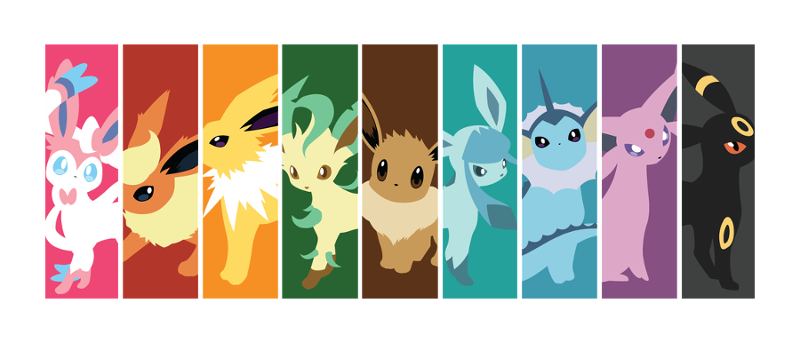Eevee is a theme for Pelican, based on Google's Material Design concept.
It is named after the Pokémon Eevee because, like Eeevee it can evolve in to many 'elements.' By default the colour scheme is teal for the primary and pink for the accent, both of these colours are configurable.
- Built around Google's Material Design
- Configurable colour scheme
- DNS prefetching
- Disqus
- Share buttons for Twitter, Facebook and Google+
- Twitter and Open Graph meta tags
- CSS minifying via webassets and cssmin
- No JavaScript but can include Material Design Lite's javascript
- Google Analytics
- Piwik
- Easy menu and footer customisation
- Custom 404 page
- Includes Material Icons, Font Awesome and Roboto font
Google's Roboto font is used for typography, Material Icons and Font Awesome are included too.
- pelican
- webassets
- cssmin
- pelican webassets from pelican-plugins
pip install pelican webassets cssminYou can find Eevee on GitHub and you can find installation instructions for themes in the pelican documentation.
The primary and accent colours are configured using the THEME_PRIMARY and
THEME_ACCENT options respectively.
You can find available primary and accent colours on Material Design Lite. This website also shows you accents that won't work well with the primary colour you choose.
THEME_PRIMARY = 'blue'THEME_ACCENT = 'amber'The default colour scheme is deep_purple and green.
THEME_PRIMARY = 'deep_purple'
THEME_ACCENT = 'green'To configure links in the header, use the MENUITEMS option.
MENUITEMS = (('Contact', '/contact/'), ('Software', '/software/'),
('Donate', '/donate/'),
('.onion', 'http://omgkuraio276g5wo.onion/'))Using DISPLAY_PAGES_ON_MENU will automatically add pages to the menu.
DISPLAY_PAGES_ON_MENU = TrueYou can display links in the footer, by default this option is enabled but
can be turned off using the MEGA_FOOTER option. See the Screenshots
section for an example of the mega footer.
MEGA_FOOTER = True # default
MEGA_FOOTER = False # disable the footerUp to four columns can be displayed in the footer.
The first column displays the links from MENUITEMS.
MENUITEMS = (('Contact', '/contact/'), ('Software', '/software/'),
('Donate', '/donate/'),
('.onion', 'http://omgkuraio276g5wo.onion/'))Using DISPLAY_PAGES_ON_MENU will automatically add pages to the menu.
DISPLAY_PAGES_ON_MENU = TrueThe second column displays categories, this is enabled using
DISPLAY_CATEGORIES_ON_MENU.
DISPLAY_CATEGORIES_ON_MENU = TrueThe third column displays social links from SOCIAL.
SOCIAL = (('Github', 'https://github.com/kura'),
('Twitter', 'https://twitter.com/kuramanga'))And finally, the fourth column displays links from LINKS.
LINKS = (('blackhole.io', 'https://blackhole.io'), )The footer will scale based on options you configure, so if you set
MENUITEMS and LINKS but not SOCIAL, there will be no gap.
A table of contents section is added to an article or page via if it exists
as a variable called toc in the article or page object.
The extract_toc adds
a toc option for RST content.
The extract_toc plugin adds an ugly header element by default, I have a modified version on GitHub that returns nicer HTML.
DISQUS_SITENAME = 'somethinghere'Setting this option will enable Disqus for articles.
USE_OPEN_GRAPH = TrueIf set, Open Graph meta tags will be added.
USE_TWITTER_CARDS = TrueIf set, Twitter meta tags will be added.
TWITTER_USERNAME = 'kuramanga'Used in conjunction with USE_TWITTER_CARDS, adds the "via" meta tag.
There are two ways of adding an image to Twitter and Open Graph so that when someone shares your content, an image will be added too.
You can add og_image to the file metadata of an article or page, allowing
you to configure and image to use per item.
Title
=====
:slug: example
:og_image: /images/example.png
Example contentOr you can set OPEN_GRAPH_IMAGE to an image location.
OPEN_GRAPH_IMAGE = '/images/example.png'Setting the GOOGLE_ANALYTICS option will enable Google Analytics,
alternatively you can set PIWIK_SITE_ID, PIWIK_URL and
PIWIK_SSL_URL to use Piwik for analytics instead.
GOOGLE_ANALYTICS = 'abc1234'PIWIK_SITE_ID = '123456'
PIWIK_URL = 'example.com'
# PIWIK_SSL_URL = '' # Defaults to https://PIWIK_URLYou can use the FEED_RSS and FEED_ATOM options to enable RSS and Atom
feeds respectively.
FEED_RSS = 'feeds/rss.xml'FEED_ATOM = 'feeds/atom.xml'Eevee is released under the MIT license.






